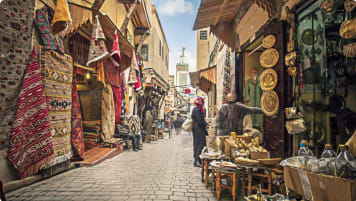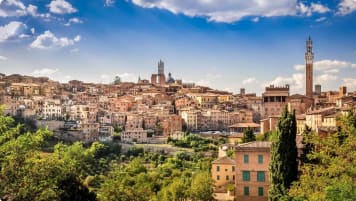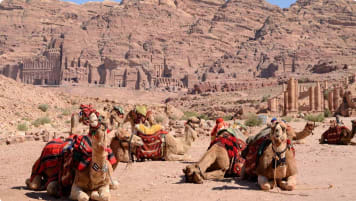The Phoenicians and Purple Dye
Article supporting tours to Morocco, Tunisia, Spain, Sicily and Crete. The Phoenicians where one of the empires controlling the Mediterranean sea from the 11th to 13th century. This article is for small group educational tours for senior couple and mature solo travellers joining a program.
13 Oct 21 · 7 mins read

The Phoenicians: A Civilization Built on Purple Dye
By Marco Stojanovik
Ancient Phoenicia was a maritime civilization which came to prominence in the mid-12th century BCE. As skilled merchants and sea people, they grew to be the dominant commercial power of much of classical antiquity, expanding their sphere of influence from their home in the Levant region (modern-day Southern Syria, Lebanon, and Northern Israel) throughout the Mediterranean sea and beyond. Their expansive maritime trade network lasted over a millennium, during which they amassed large amounts of wealth developing the most sought-after products in the ancient world.
The most expensive and treasured product of the Phoenician civilization was the famous Tyrian purple dye (also known as Phoenician purple, royal purple, imperial purple, or imperial dye) extracted from the mucus of the murex shellfish. The natural dye’s difficulty of manufacture, striking deep purple color, and resistance to fading made it highly desirable and expensive as a clothing dye. So exorbitantly expensive – worth literally more than their weight in gold – garments made of purple cloth became associated with power and wealth, worn only by the very elite.
As the basis for their trading empire, the Phoenicians maintained a monopoly on the expensive Tyrian dye, expanding across the Mediterranean, Iberian Peninsular, and North Africa in search for beds of the precious murex shell. In doing so, they established overseas colonies as sites for gathering murex and manufacturing the purple dye, and as trading posts. Thus, the purple garments were the main reason for the Phoenician’s wide-ranging expeditions, which ultimately helped to facilitate the exchange of cultures, ideas, and knowledge between major cradles of civilization.
This article explores who the Phoenicians were and the importance of their purple dye during ancient history. It is intended as background reading for a number of Odyssey Traveller tours in the lands of the ancient Phoenicians, including Morocco, Tunisia, Spain, Sicily, and Sardinia.
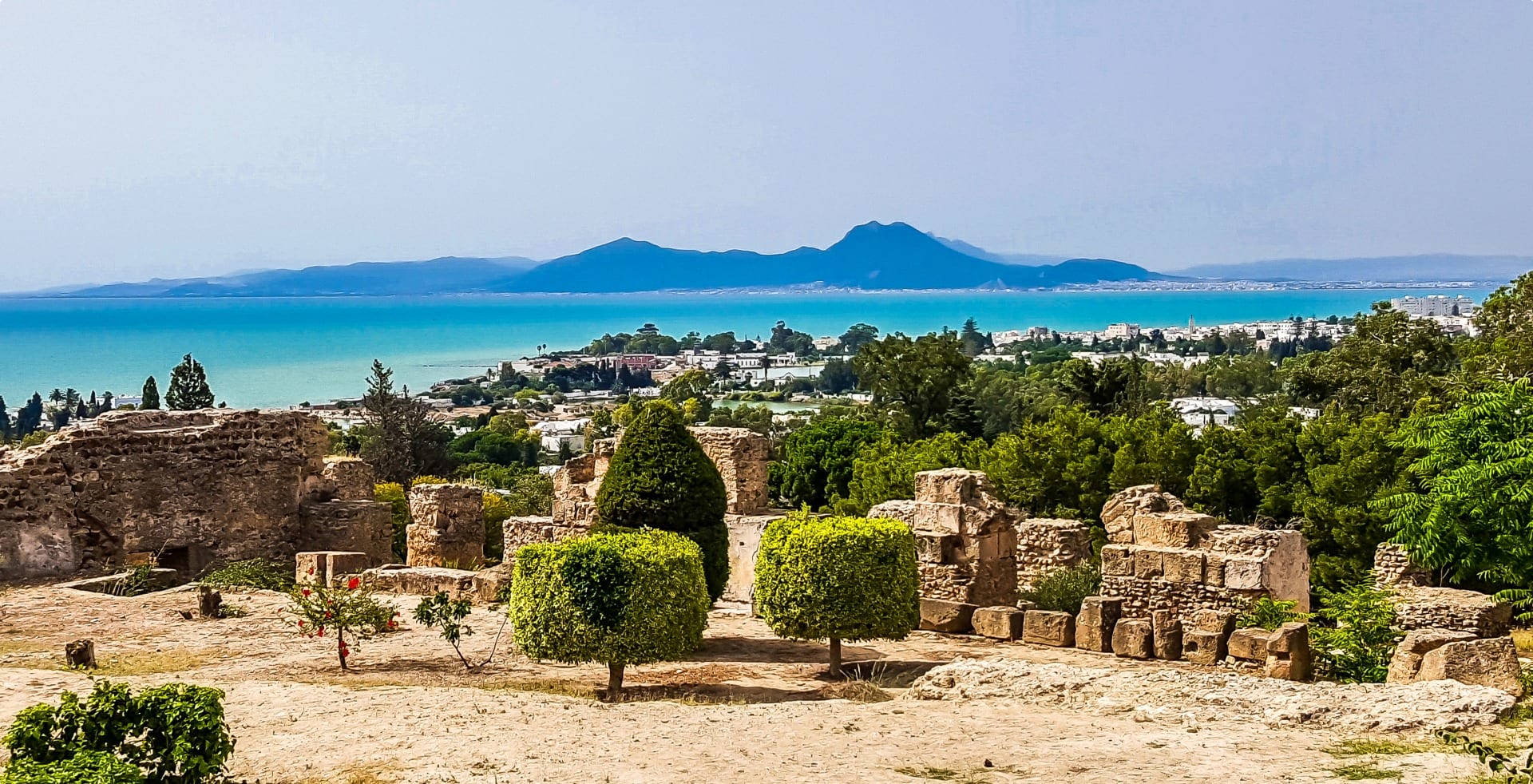
Who Were the Phoenicians?
The ancient Greeks were the ones who came up with the name “Phoenician”, denoting the Semitic / Canaanite culture that spanned the ancient Mediterranean basin. The name comes from the Greek term “phionix”, which signified blood-red or purple, an allusion to the Phoenicians’ famous dark purple fabric – a rare and prized commodity across the ancient world. The Phoenicians called themselves the Canaanites, also meaning purple people in the Semitic language.
Strictly speaking though there was never one kingdom or country by the name of Phoenicia. Rather, their realm was organised into a series of city-states, with the heartland along the coastal plains of the eastern Mediterranean region of the Levant (modern-day Southern Syria, Lebanon, and Northern Israel).
The first major Phoenician city-state, Tyre, was founded around 2000 BCE. Oher prominent city-states, including Byblos, Sidon, Sarepta, Arwad, and Berot (modern-day Beirut) then emerged over the next centuries along the Phoenician coast. Each city retained political autonomy but shared a common language and script and were united with common cultural traits and characteristics.
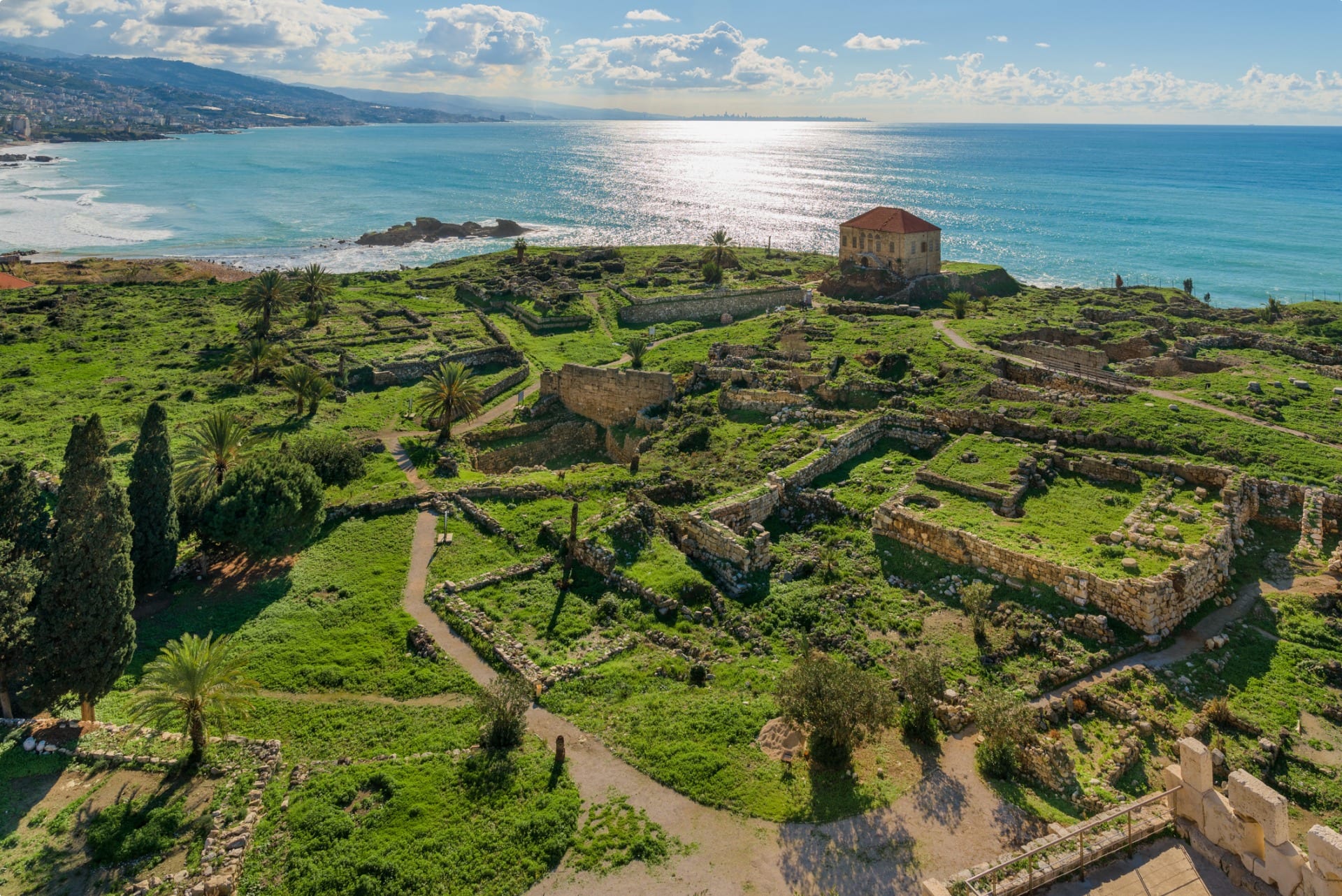
Undoubtedly one of the defining traits of the different Phoenician city-states were their trade and maritime activities, with merchants and explorers spreading across the Mediterranean over centuries. Having limited resources themselves, the cities gradually became centres of maritime trade and manufacturing, importing raw materials and fashioning them in more valuable objects to be shipped profitably.
They imported items such as tin and silver to make bronze, while exporting items such as jewellery, ivory carvings, metalwork, furniture, houseware, specialty items like painted ostrich eggs, and most prominently of all Tyrian purple dye.
Trade routes were maintained north to the Black Sea, India in the east, and northern African and Spanish territories in the west. Superior ships and navigational skills even allowed the Phoenician sailors to travel out of the Mediterranean basin, across the Straits of Gibraltar, and reach as far as Great Britain and the Northwest coast of France.
In doing so, they established a number of overseas city colonies on the islands of Sicily and Sardinia, in North Africa (including the great trading city of Carthage which became a civilization of its own in the 7th century BCE rivalling ancient Rome), Marseilles in France, and Barcelona, Cadiz, Malaga, and Algeciras in Spain.

The Importance of Phoenician Purple Dye
Ultimately, Phoenician trade was founded on their famous purple dye, derived from the shell of the murex sea snail. Archaeological evidence suggests the production of the purple, used as a fabric dye, began as early as the 12th century BCE. Requiring tremendous amounts of resource and extensive labour to produce it and noted for its great durability and lack of fading, it swiftly came into high demand, fetching an expensive price as a major source of wealth for the ancient Phoenician society. At times the price even outweighed the price of gold and silver!
As such, wearing the purple-dyed fabric became a symbol of wealth, abundance, and imperial authority for the Phoenicians and other civilizations with whom they traded, most notably the Romans. Indeed, the dye remained popular amongst the Roman elites well into the days of the Roman Empire, with discoveries of bowls containing traces of the pigment having been made in the ruins of Pompeii and other ancient cities.
Phoenician Colonization in Search of the Purple Dyes
The Phoenicians harvested and processed snails for the purple dye at almost every bigger city on the Levant coast. By the 10th-century BCE, there were hundreds of these production centres, the largest at Tyre, Sidon, and the ancient city of Menix in Djerba (Tunisia). The demand was so high that vast deposits of the discarded shells have been excavated on the outskirts of Sidon and Tyre – the mound of shells at Sidon reaching an astounding 40 metres high!
Such was the demand that the resources soon dwindled, with the species eventually exploited to extinction, along the coasts of Phoenicia. And so, the Phoenicians were forced to turn elsewhere to supplement reserves. At first, they imported them from other Mediterranean areas, particularly modern-day Tunisia, and the Gulf of Aqaba at the northern tip of the Red Sea. Then they set off to settle new cities in regions where they could find the creatures.
In the 8th-century BCE, they became the first civilization to sail out of the Mediterranean past the Pillars of Hercules, into the Atlantic. Here on the western coast of southern Spain, they established oceanic trading stations – Gades (today’s Cadiz) and Tartessus – which they would occupy for the next four centuries.
By the 7th-century BCE, they had begun venturing even further from their two Spanish port cities in the search for more sources of the molluscs that excreted the dye. Finding little evidence of it in their searched to the north along the Spanish coast, they returned southwards. There, hugging the low sandy cliffs of the northern corner of Africa, the found murex colonies in abundance.
They reached as far south as the islands that would be named Mogador in modern-day Morocco, where the gastropods were to be found in suitably vast quantities. Murex trade commended from here and it grew into a grand production centre.
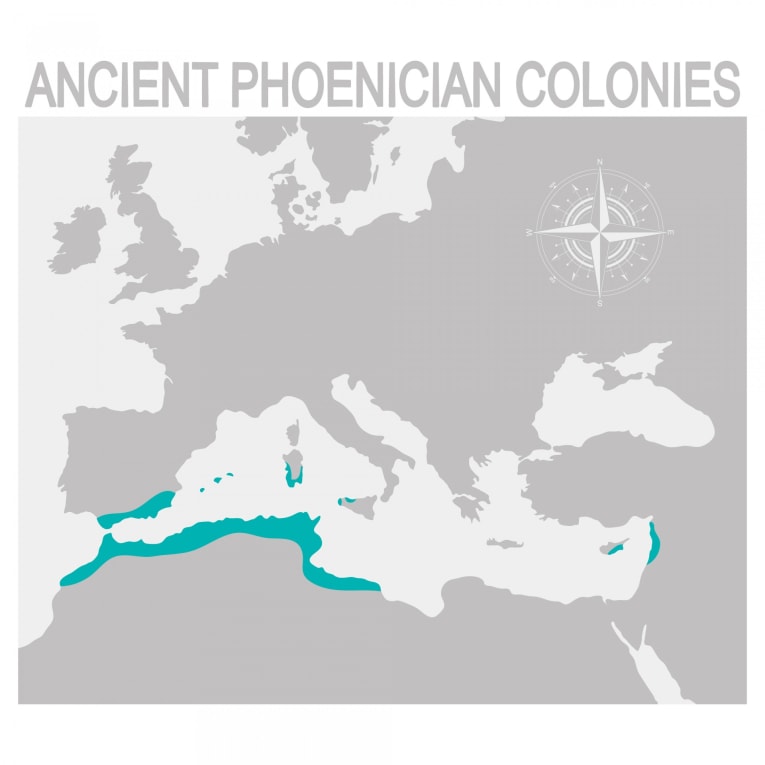
Manufacturing the Purple Dyes
The Phoenicians extracted the dye from the mucus of murex snail species released as a defence mechanism. To harvest these creatures, the Phoenicians had to venture into the deep waters, laying baited traps suspended from floats. They then extracted the dye from the glands of the thousands of putrefied crushed shellfish left to bake in the sun.
The result was a range of liquid dyes which, rather than fading, actually became brighter when exposed to the elements. They came in a variety of colours depending on the specific snail species, ranging from pink to violet, but it was the rich deep red purple from the murex brandaris species that was always the finest and most sought after, catching the highest price.

As such, the Phoenicians generally kept their manufacturing process pretty secret. However, some ancient sources, most famously that of the Roman naturalist and writer Pliny the Elder, did account for it.
In his first century CE book, Natural History, Pliny describes how the glands of the collected shellfish were removed and collected in a vat, to which salt was then added and mixed in. The salted glands were then left for precisely three days, before being boiled down with water in a tin or stoned vessel under medium heat. The boiling would last for ten days, removing all impurities from the mixture. Finally, when the correct hue had been reached, a fleece would be dipped into the mixture to check the quality of the dye.
The manufacturing process required a substantial amount of intensive labour, with tens of thousands of murexes needed to be collected to dye even just one garment. Each murex produced just two drops of dye, with 10,000 needed to produce a single gram – and that would then only be enough to dye the hem of a garment. To dye an entire piece of clothing then would have demanded an enormous number of snails. It’s no surprise then the dye was so expensive.
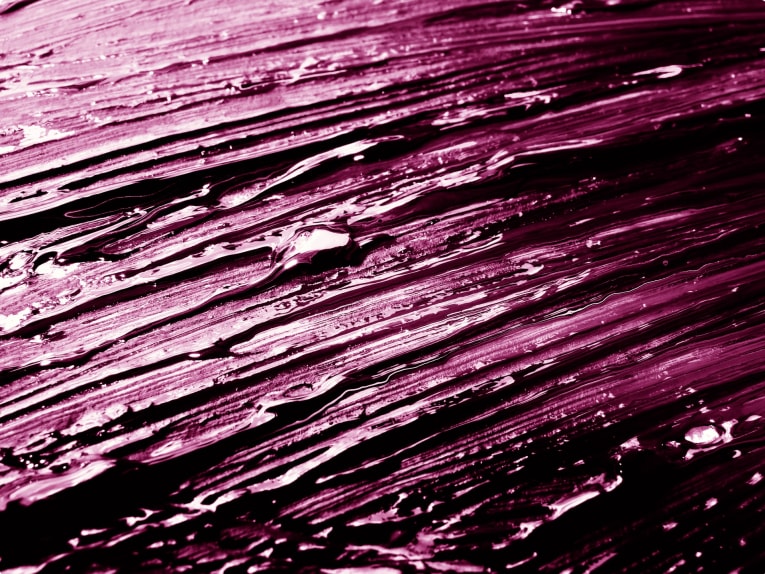
Tour of Phoenician Lands
Odyssey Traveller visits several locations occupied by the Phoenicians in ancient times during our small group guided tours in the Mediterranean, North Africa, and Iberian Peninsula. These include our:
- Mediterranean Islands Tour | Malta, Sicily, Sardinia, and Corsica (25 days)
- Tour of Tunisia (15 days)
- Morocco Tour (20 days)
- Spain and Portugal Tour (24 days)
These tours are designed for senior and mature travellers who would like to learn about history and culture with like-minded people in a small group setting (participant number is typically 6 to 12), using the knowledge and expertise of our tour leader and local guides.
Odyssey Traveller has been serving world travellers since 1983. All tours provide an authentic and culturally informed travel experience, that goes beyond the usual tourist sites in favour of drawing out the hidden histories of our destinations. Our tours are all-inclusive, encompassing accommodation, attraction entries, and transport.
For more information, click here, and head to this page to make a booking.
Articles on ancient civilisations published by Odyssey Traveller
- Bronze Age Civilisations of the Eastern Mediterranean Islands
- The Roman Empire
- The Legacy of the Safavids in Persia
- Empire Crossing the Mediterranean
- The Ottoman Empire
External articles to assist you on your visit to the Lands of the Phoenicians
Related Tours
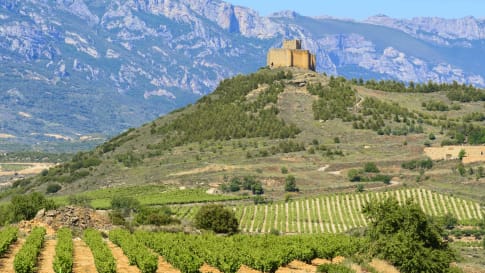
24 days
Apr, Oct, MarSmall Group Guided Tours of Spain and Portugal
Visiting Portugal, Spain
Our program explores the lands of Spain and Portugal, two countries bound by many centuries of history reflected in their modern cultures. Divided by history and language, contiguous neighbours Spain and Portugal were once host to gigantic empires that still bear their languages and lifestyles. A small group tour for couple and solo travellers.
From A$16,225 AUD
View Tour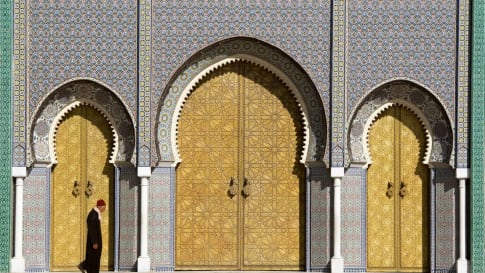
20 days
Apr, Oct, MarMorocco tour for senior travellers
Visiting Morocco
Embark on an unforgettable journey through Morocco: A Gateway to a world of vibrant colors, cultural diversity, and endless wonder. Join our escorted small group tour designed for senior travellers, whether you're a couple or a solo adventurer, and immerse yourself in the captivating allure of Casablanca, Fez, Meknes, Rabat, Marrakech and beyond. Experience the richness of Moroccan traditions and heritage as we explore this enchanting destination.
From A$11,915 AUD
View Tour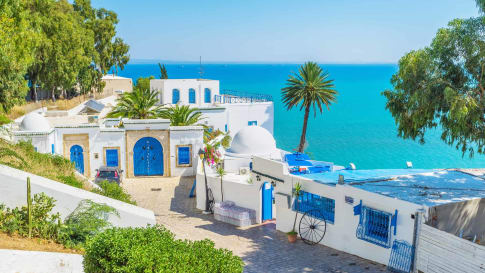
14 days
Apr, Sep, MarTour of Tunisia
Visiting Tunisia
Join Odyssey Traveller on this small group tour of Tunisia in North Africa for couples and solo travellers, where Carthaginian ruins sit side by side with Roman monuments, grand Islamic mosques, Arabic souks and medina, and honeycomb-like Berber cave dwellings and hilltop villages.
From A$10,995 AUD
View Tour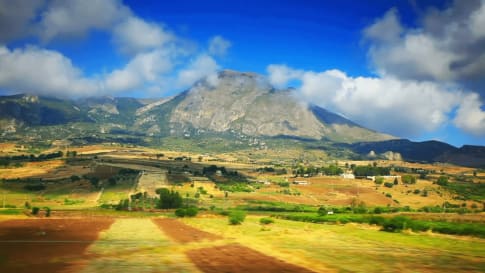
25 days
Apr, Sep, OctMediterranean Islands Small Group Tour | Malta, Sicily, Sardinia and Corsica
Visiting Corsica, Italy
For centuries Malta, Sicily, Sardinia and Corsica held the key to the Mediterranean. Unlike other European tour companies, Odyssey provides a tour leader and local guides to share detailed itineraries about the destinations on these small group journeys. This escorted tour of western Mediterranean explores the geography, history, culture and peoples of these 4 islands. Small group tour for mature couples and solo travellers. A reasonable single supplement is charged.
From A$19,750 AUD
View Tour
12 days
Apr, Oct, SepMalta & Sicily - Mediterranean Islands small group tour
Visiting Italy, Malta
For centuries Malta & Sicily, held the key to the Mediterranean. Unlike other European tour companies, Odyssey provides a tour leader and local guides to share detailed itineraries about the destinations on these small group journeys. For mature couples and solo travellers. A reasonable single supplement is charged.
From A$10,150 AUD
View Tour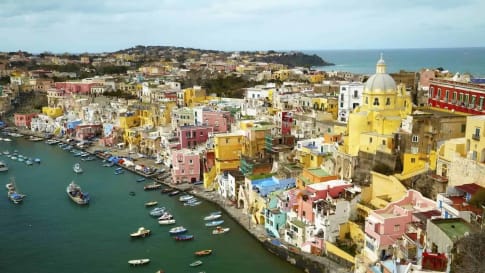
22 days
Jan, Apr, SepAncient History of Southern Italy & Sicily group tours
Visiting Italy
Our program for senior travellers, as well as featuring the rugged countryside of Southern Italy, also encompasses learning about the many civilisations that have shaped this land. We learn about the influence of the early Phoenicians, Greeks, Romans, Byzantines, Saracens, and Aragonese.
From A$16,995 AUD
View TourRelated Articles
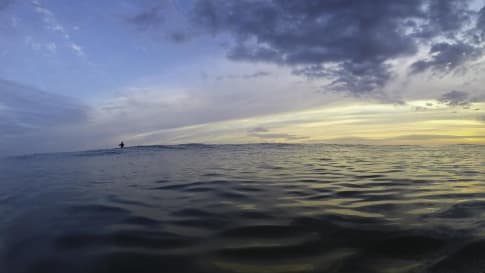
Atlantic Ocean and How it Shaped Ancient Communities In Europe
Article of interest for senior couples and mature solo travellers joining a small group European tour to Faroe Islands, Scottish Isles, Morocco or Portugal. Focus is on the early exploration of the Atlantic.
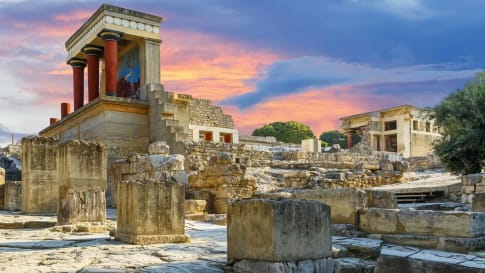
Crete History for Travellers
Crete History for Travellers Crete is one of the most beautiful and traditional regions of Greece. Although Cretans have fought generations of invaders, they are a people whose courtesy and hospitality is legendary. These lands…

Textiles through History: The Definitive Guide for Travellers
Weaving textiles throughout history and the advancement of society Fabric and textiles industry has a long and coloured past. While it is estimated that fabrics were used in the time of the Stone Age, nearly…

Continental Crossroads: Discover Morocco
Morrocco, ancient civilisation, blue city, white city, Berbers, The Romans, Portugese the history rolls on for this country in North Africa. Join a small group vacation package that tours Morocco. A tour of Morocco for mature and senior travellers, couples or singles over the course of the itinerary, the history, culture and landscape are all explored, from Fez to Marrakech or the Cave of Hercules.
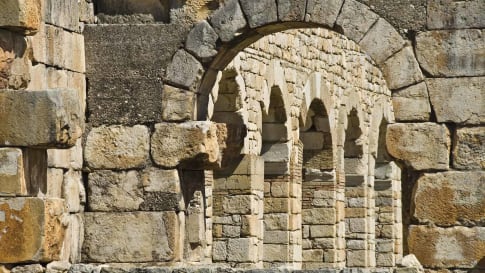
The Roman Ruins of Volubilis, Morocco
The Roman Ruins of Volubilis, Morocco Not many people know that there are Roman ruins in the North African kingdom of Morocco. Near the modern-day city of Meknes, about 33 kilometres south of the city,…

Early History of Sicily: From the Phoenicians to the Arab Conquest
Early History of Sicily: From the Phoenicians to the Arab Conquest (800 BC to the 10th Century) Sicily in Southern Italy is the largest island in the Mediterranean, separated from the mainland by the Strait…
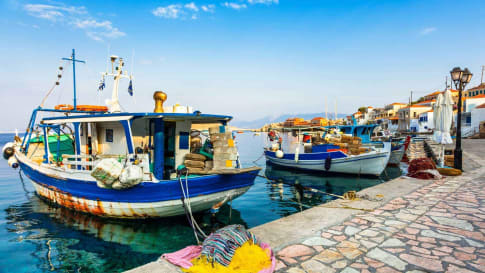
Empires Crossing the Mediterranean: 1130-1300
As a sea connecting continents and stretching from the Atlantic Ocean in the west to Asia in the east, the Mediterranean has for centuries been a centre of trade and exploration.
